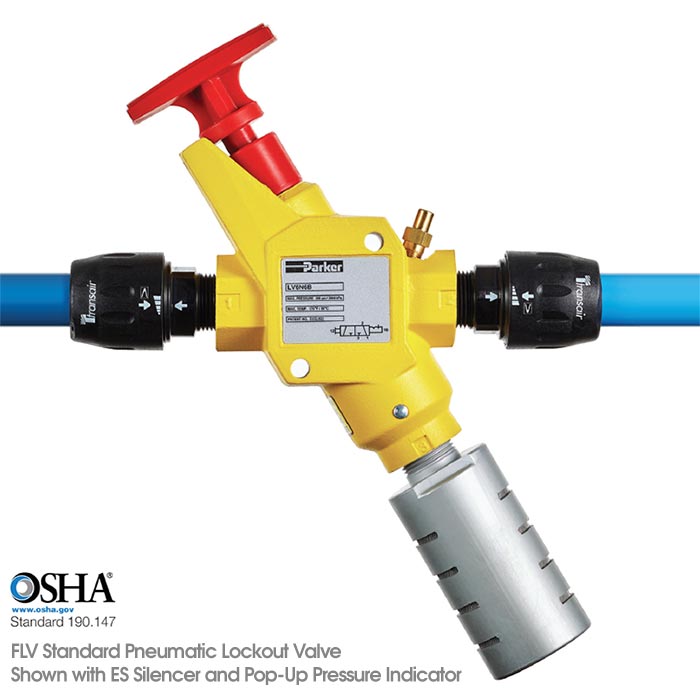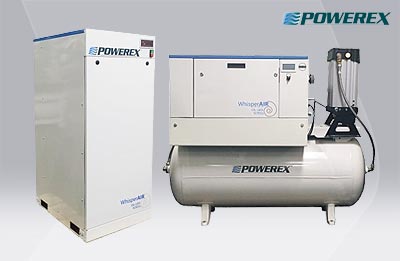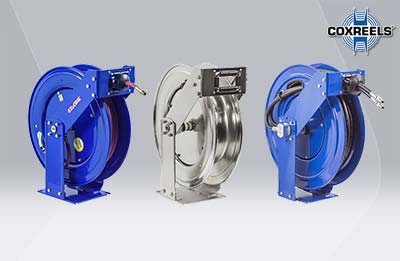Transair® ProTips
Control of Hazardous Energy:
Follow Lockout/Tagout Practices
The unexpected release of stored energy (electrical, mechanical, hydraulic, pneumatic, chemical, thermal or other sources) in machines and equipment can result in injury or death. Employees who service or maintain machinery and other equipment are at the greatest risk from the unexpected release of hazardous energy, such as a steam valve being turned on while a worker is repairing a connection in the piping. Injuries may include electrocution, burns, crushing, laceration, or more serious injuries.Be sure to follow all OSHA lockout/tagout guidelines to prevent accidental stored energy releases while employees are engaging or otherwise working with the machinery.
Compliance with lockout/tagout standards prevents an estimated 120 fatalities and 50,000 injuries each year.
The 1910.147 OSHA Standard requires control of the release of stored energy via lockout/tagout where the energy isolating device is not capable of being locked out.
OSHA Control of Hazardous Energy Standards
Control of hazardous energy is addressed in specific OSHA standards for general industry, maritime, and construction. This section highlights OSHA standards and documents related to control of hazardous energy (lockout/tagout).
General Industry (29 CFR 1910) |
Related Information |
|
|---|---|---|
|
1910 Subpart J - General Environmental Controls | 1910.147, The control of hazardous energy (lockout/tagout). |
Related Information |
|
1910 Subpart R - Special Industries | 1910.261, Pulp, paper, and paperboard mills. |
Related Information |
1910.269, Electric Power Generation, Transmission, and Distribution. |
Related Information | |
|
1910 Subpart S - Electrical | 1910.306, Specific purpose equipment and installations. |
Related Information |
1910.333, Selection and use of work practices. |
Related Information | |
Maritime (29 CFR 1915, 1917, 1918) |
Related Information |
|
|---|---|---|
|
1917 Subpart C - Cargo Handling Gear and Equipment | 1917.48, Conveyors. |
Related Information |
1918.64, Powered conveyors. |
Related Information | |
Construction (29 CFR 1926) |
Related Information |
|
|---|---|---|
1926.64, Process safety management of highly hazardous chemicals. For requirements as they pertain to construction work, follow the requirements in 29 CFR 1910.119. |
Related Information | |
|
1926 Subpart K - Electrical | 1926.417, Lockout and tagging of circuits. |
Related Information |
1926.702, Requirements for equipment and tools. |
Related Information | |
State Standards
There are 28 OSHA-approved State Plans, operating state-wide occupational safety and health programs. State Plans are required to have standards and enforcement programs that are at least as effective as OSHA's and may have different or more stringent requirements.
Other State Standards and Guidance
• Lockout/Tagout (LOTO) (Control of Hazardous Energy). Washington State Department of Labor & Industries. Landing page for LOTO resources.• Lockout/Tagout – Oregon OSHA’s guide to controlling hazardous energy. Oregon OSHA Publication 440-3326 (May 2015). This guide is based on the requirements in Oregon OSHA's standard for hazardous energy control - Subdivision 2/J, 1910.147. Lockout and tagout are the primary methods of controlling hazardous energy.
• Sample Written Program for Control of Hazardous Energy (Lockout/Tagout). Texas Department of Insurance. Sample lockout/tagout program provided as a guide to assist employers and employees in complying with the requirements of 29 CFR 1910.147, as well as to provide other helpful information. It is not intended to supersede the requirements of the standard.
• Control of Hazardous Energy (Lockout/Tagout) --- 29 CFR 1910.147 - Sample Program. Maine Department of Labor. Sample hazardous energy control program provided by SafetyWorks! as a guide to help employers implement OSHA's Control of Hazardous Energy (Lockout/Tagout) standard (29 CFR 1910.147) in their workplace.
Additional OSHA Lockout/Tagout Information
OSHA Lockout/Tagout ConceptsOSHA Lockout/Tagout Program
Publications
OSHA Publication 3120: Control of Hazardous Energy, Lockout/TagoutAlso Available from mdi
 |
TransairAluminumPipe.com is owned and operated by mdi, Manufacturers Distributor, Inc. mdi is an Authorized Parker Transair Piping System Distributor. Click Here to view the mdi Line Sheet. |



